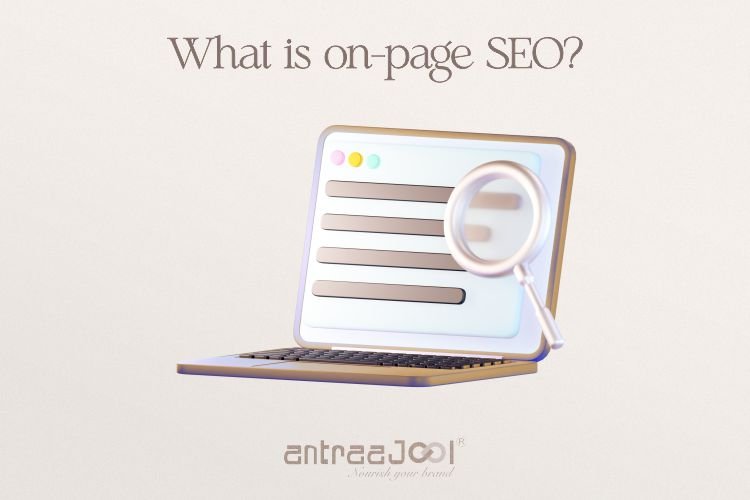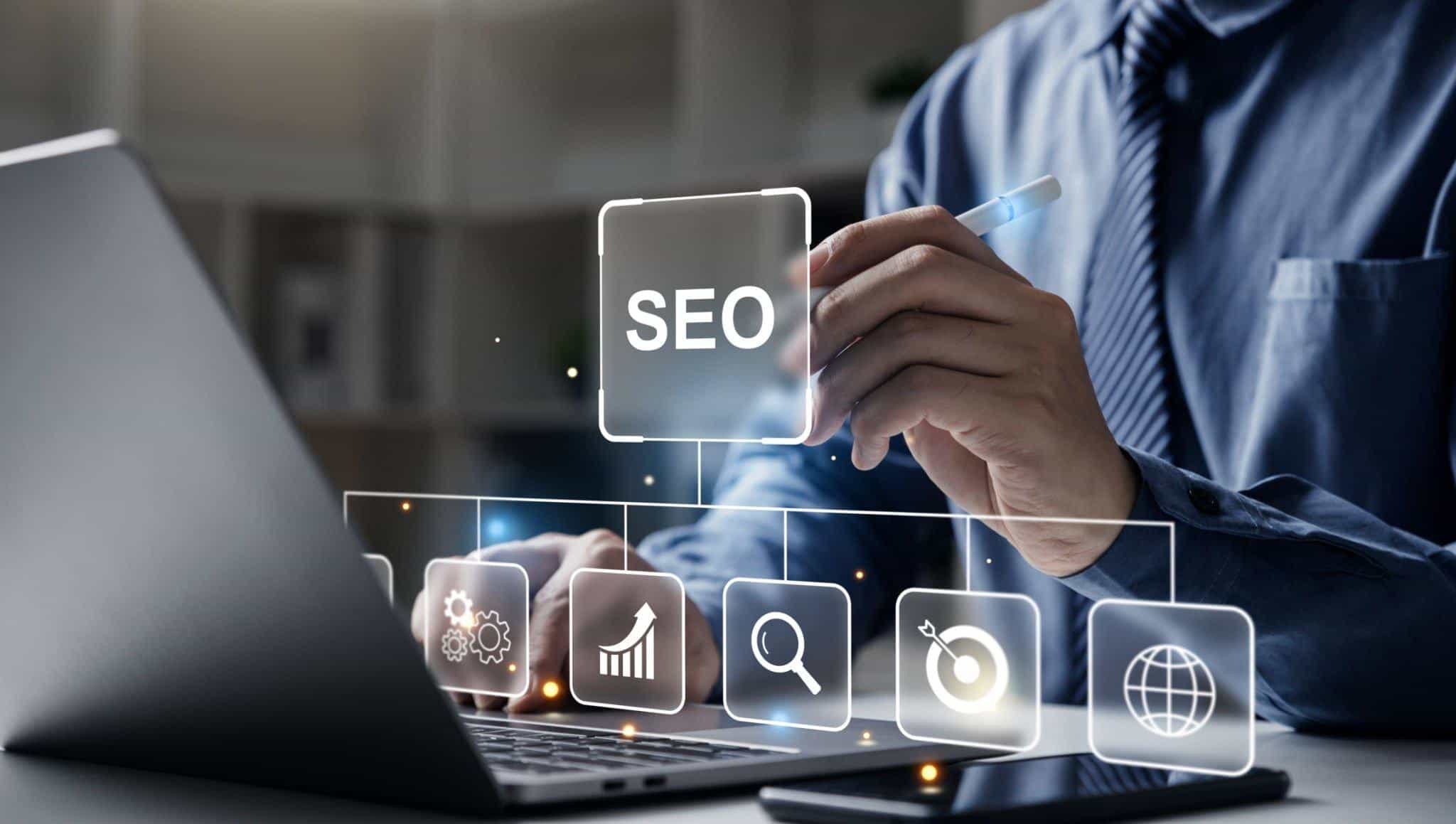If you have a website for your business online, you are likely to know and understand the basics of SEO, or search engine optimization. You could have an SEO campaign in place too. But are you aware of the different parts of SEO? There is both, off-page and on-page SEO.
This is a part of SEO that has its focus on optimizing elements on your website. Like page speed and keyword density, versus the factors outside your website, like backlinks.

Today we will talk more about on-page SEO, from what it is to how to do on-page optimization so that you can maximize your efforts to get the best results. You can all the time get in touch with an Best SEO Company In Chandigarh and talk to them about the On-Page SEO and how to operate it efficiently.
What Is On-Page SEO?
Any optimization that you perform or control or include on your website is called On-Page SEO. with these optimizations, you tend to make your website more user friendly and value-oriented and improve your rankings or visibility in search results on Google, Bing, and other search engines.

Why Do On-Page SEO Matters?
It is done as it leads to higher search rankings, increased traffic to your website, and more conversions. Of course, the results of on-page SEO take some time, but once it gets off the ground, it can make your online sales hit the sky and soar high.
What On-Page SEO Ranking Factors Should You Optimize?
When performing On-Page SEO, you have several different ranking factors. Do you want to optimize all these factors? If you take the time to optimize all these factors then you will improve your rankings in search results and make your website more competitive and difficult to beat.
On-page optimization factors you should focus to include:
- URL
- Title tag
- Meta Description
- Heading Tags
- Alt Tags
- Keywords
- Content
- Speed
- Internal Linking
- Images
- Mobile-Friendliness
Example of some on-page SEO action items include:
- Optimizing your title tags and meta descriptions.
- Writing in-depth, quality content.
- Cleaning up your site’s code.
- Streamlining your site’s navigation.
- Speeding up your website.
Keep reading to learn how to do on-page optimization for each of these on-page SEO factors.
How To Optimize On-Page SEO?
Now that you know what factors influence your On-Page SEO, you can start optimizing them. Take care, it will take time to optimize your website, as well as see the results from it. As per Antraajaal the Best SEO Agency In Chandigarh follows best practices for these factors, however, will help you create a website that can endure algorithm updates.
URL
- What is the URL? The URL is like an address, but for a page on the internet.
- URL for your page must include a short description of your page and the page’s topic.
- Use clean and organized URLs — like the first example above–to improve your site architecture and help you rank higher in relevant search results.
Title Tag
- What is a title tag? Your title tag is the title of your page and it appears only in search results.
- In order to show your website on search engine results pages (SERPs). Google has to know the subject of your page. Using specific keywords in the title tag of each page makes it easier for the search engine crawlers to understand your website.
- For instance, if you are targeting the keyword,’’ dog daycare Daytona beach, ‘’ you may create the following title tag: ‘’ Top Dog Daycare in Daytona Beach/Company Name.’’ for the best results, limit your title to 55 characters to prevent Google from cutting it off in search results and use your targeted keyword at the beginning.
Page Speed
- Page speed measures how fast content on the page loads.
Internal Linking
- Internal linking describes linking to and from pages on your website.
Images
- Images are a form of multimedia that helps people understand and skim content.
Mobile-Friendliness
- Mobile-friendliness describes your site’s usability on mobile devices.
Meta Description
- Your meta description is your page’s summary and the number of appears in SERPs.
- It does not influence the optimization of your page directly. It’s a feature to help the users to learn more about your page. The fact that Google will bold user search terms that appear in your meta description is another reason to optimize your meta description for On-Page SEO.
- Include your core and related keywords in your meta description for the best results. Your page about dog daycare in Daytona Beach for instance may use the following meta description: ‘’ Looking for dog daycare in Daytona Beach? Come to Rover’s for dog daycare, dog grooming, and more!’’
- For better results, your meta description should be limited to 160 characters.
Heading Tags
Heading tags break up the content with H2, H3, and H4 headings to improve the readability. When it comes to heading tags, you want to use them for search engines and users. use heading tags throughout your content to break it up and make it more readable for users. You can also add your core or related keywords to provide search engines with more context for your page.
For example, a post about dog daycare may use the following headings:
- What does dog daycare include?
- How much does dog daycare cost?
- How to find the best dog care?
When writing y our heading tags, remember to target your core keyword in your H1 tag.
Alt Tags
- Alt tags provide more information for multimedia, like images and videos.
- For example, if you have a photo of an apple, your alt tag could say ‘’red delicious apple.’’ beyond that, you can add descriptive names to the image files themselves so Google can get a better idea of your multimedia.
- Keywords are used to describe words used in SEO to target valuable user queries.
- Each page on your site should include text content that discusses the topic of the page.
- Even pages that are typically not optimized, such as the ‘’contact us’’ page, can help your business gain recognition online. Using keywords throughout the body text of your page helps Google read it and rank it appropriately.
- You should reach and compile keywords for each page on your site. Keyword research tools like KeywordsFX and Keywordtool.io can help you understand the keywords people research related to your products and services.
Content
- Content provides users with answers and search engines with context.
- Content is critical to on-page optimization.
- With content, you give users a reason to visit your site.
- Whether it is to read a blog post or check out a product page, people browser your content. Optimizing your content can help search engines understand and rank your content, which can lead to people finding your website.
On-Page SEO for content revolves around the following practices:
- Using your keywords in headings and paragraphs.
- Breaking your content into skimmable headings.
- Complementing your content with helpful images.
- Ensuring your content uses correct spelling and grammar.
- Making your content trustworthy and authoritative.
In addition, you should regularly add new pages of content to your site so that search engines will see that you are active online. You can do this with new blog posts, landing pages, and other strategies that show Google you are hard at work for the benefit of your customers.
